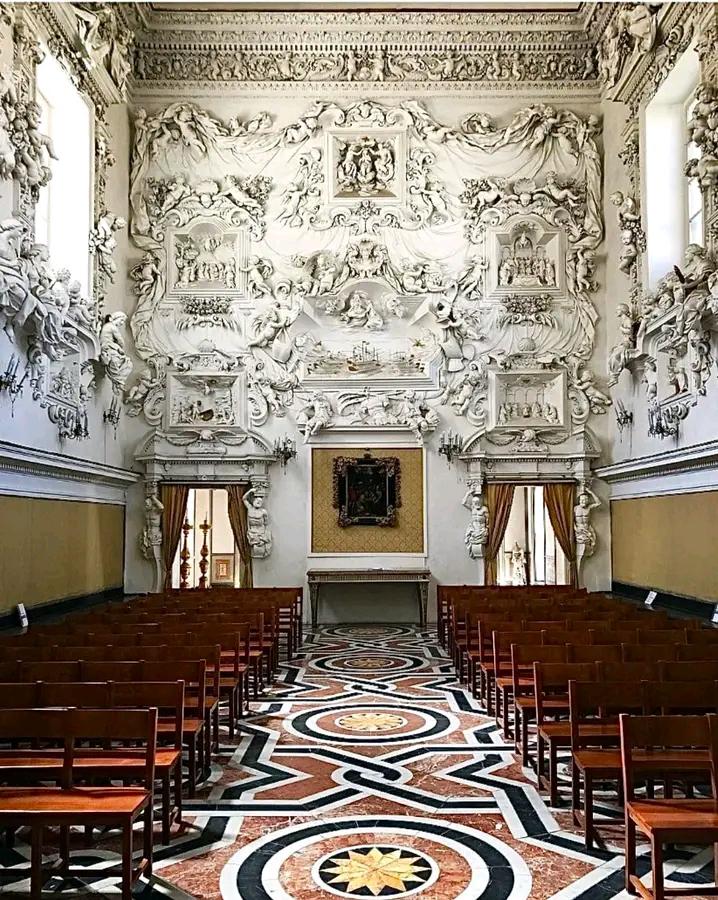DECORATION OF THE ORATORY OF THE ROSARY OF SANTA CITA CHURCH, 17th century, Palermo, Sicily, Italy
Extraordinary stucco works are by Giacomo Serpotta.
Established by the Rosary Company of Santa Cita, the oratory celebrates the 'Glorious Mysteries' of the Rosary and commemorates the Virgin Mary's perceived intervention during the Battle of Lepanto (1571). Beyond its role as a place of worship, it also served as a gathering space for the company members. Serpotta decorated the oratory between 1686 and 1718, with the 'Joyful Mysteries' depicted on the left wall, the 'Painful Mysteries' on the right, and the 'Glorious Mysteries' on the back, which tell the story of Mary's life from the Annunciation to the Crowning of Mary. The oratory's centerpiece is a neoclassical marble high altar, featuring Carlo Maratta's painting of the 'Madonna del Rosario' (1695).
(Photo credit to the original photographer)
Extraordinary stucco works are by Giacomo Serpotta.
Established by the Rosary Company of Santa Cita, the oratory celebrates the 'Glorious Mysteries' of the Rosary and commemorates the Virgin Mary's perceived intervention during the Battle of Lepanto (1571). Beyond its role as a place of worship, it also served as a gathering space for the company members. Serpotta decorated the oratory between 1686 and 1718, with the 'Joyful Mysteries' depicted on the left wall, the 'Painful Mysteries' on the right, and the 'Glorious Mysteries' on the back, which tell the story of Mary's life from the Annunciation to the Crowning of Mary. The oratory's centerpiece is a neoclassical marble high altar, featuring Carlo Maratta's painting of the 'Madonna del Rosario' (1695).
(Photo credit to the original photographer)
DECORATION OF THE ORATORY OF THE ROSARY OF SANTA CITA CHURCH, 17th century, Palermo, Sicily, Italy 🇮🇹
Extraordinary stucco works are by Giacomo Serpotta.
Established by the Rosary Company of Santa Cita, the oratory celebrates the 'Glorious Mysteries' of the Rosary and commemorates the Virgin Mary's perceived intervention during the Battle of Lepanto (1571). Beyond its role as a place of worship, it also served as a gathering space for the company members. Serpotta decorated the oratory between 1686 and 1718, with the 'Joyful Mysteries' depicted on the left wall, the 'Painful Mysteries' on the right, and the 'Glorious Mysteries' on the back, which tell the story of Mary's life from the Annunciation to the Crowning of Mary. The oratory's centerpiece is a neoclassical marble high altar, featuring Carlo Maratta's painting of the 'Madonna del Rosario' (1695).
(Photo credit to the original photographer)
0 Comments
·0 Shares
·0 Reviews



